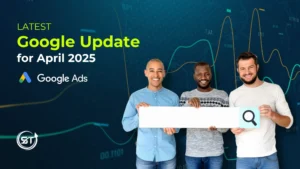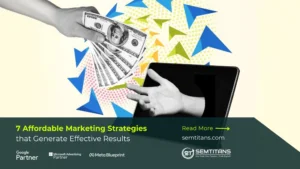
In recent years, people have been spending more time online searching for services, products, and things that interest them. These changes have led digital marketing companies to find new ways to connect and retain their customers. The internet has made it easier for customers to interact directly with brands, resulting in new marketing strategies like inbound and outbound marketing.
Table of Contents
ToggleWhat is Inbound marketing?
Inbound marketing is a way to attract customers by creating helpful content. It connects with people at different stages of buying by solving their problems. The key points to remember in this:
- Customers willingly interact with your content.
- It provides valuable information to address issues.
- It focuses on what customers need and prefer.
- It builds long-lasting relationships over time.
Simply put, customers choose your content because it’s useful and meets their needs. By focusing on building relationships, you can keep customers engaged and happy in the long run.
Inbound Marketing Strategies:
1. Content marketing:
Content marketing is a crucial part of inbound marketing. It’s all about creating and sharing valuable content to grab the attention of a specific audience. This can include blog posts, whitepapers, e-books, infographics, videos, podcasts, case studies, and webinars. To make your content stand out, it’s important to do proper keyword research. Then, establish strong content pillars. Be bold and tweak or update your content as needed. Consistency is key, so stick to a regular posting schedule. Having user-generated content and collaborating with industry experts can also be a good strategy.
To know your content strategy is working, one must track data such as how many people view a page, how long they stay, how often they leave quickly, if they share content on social media, and if they are converted into leads or customers. By understanding these insights, one can focus on what audiences enjoy and create content accordingly to boost engagement and conversions.
For example, Spotify’s annual Wrapped campaign transforms user data into personalized, shareable content. This clever strategy boosted engagement and brand awareness and encouraged users to share their listening habits on social media.
2. Search Engine Optimization (SEO):
Search Engine Optimization (SEO) is another strategy in inbound marketing that focuses on boosting a website’s visibility in search engine results for specific keywords. There are four main areas of SEO to focus on:
- On-page SEO: This involves optimizing elements within the website, such as titles, meta descriptions, headers, images and internal linking. Paying attention to these details can improve your site’s visibility and ranking on search engines.
- Off-page SEO: Building authority is crucial for SEO success. This can be achieved through link building, engaging on social media, and getting your brand mentioned on other websites. These tactics help to establish your site as a trusted source of information.
- Technical SEO: Ensuring your website is technically sound is essential for SEO. This includes improving site speed, ensuring your site is mobile-friendly, and search engines can easily crawl and index your site.
- Local SEO: Optimizing for local search visibility is key if you have a local business. This involves setting up a Google My Business profile, getting listed on local directories, and ensuring your business information is consistent across the web.
For example, Canva is excellent at design-related searches as they have a vast template library and a blog full of SEO-friendly design tips. Zapier has a strong SEO presence thanks to its app directory and integration pages optimized for long-tail keywords. Moz is known as an SEO authority because it has in-depth guides, a constantly updated blog with cool videos like Whiteboard Friday, and free tools like the Domain Authority checker.
3. Social Media Marketing
Social media marketing (SMM) is another strategy that helps businesses connect with their audience on different platforms to boost brand awareness and relationships. It uses different tactics depending on the platform, adopting unique approaches. LinkedIn is for professional content, Facebook is for community connection, Instagram is for visual tales, Twitter is for real-time chat, and TikTok is for creating short videos.
Many social media platforms use different content strategies to engage their audience and promote interaction. These strategies include user-generated campaigns, live event broadcasts, influencer takeovers, creative hashtag usage, and integrating e-commerce. Along with these organic methods, paid strategies like targeted ads, retargeting campaigns, and reaching similar audiences are also used.
For example, Glossier uses Instagram to showcase user-generated content, making their brand more authentic. LinkedIn shares professional insights to position themselves as thought leaders. Spotify creates personalized experiences through custom playlists and music insights, building a dedicated community.
4. Email Marketing:
Email marketing is another effective way to reach your audience with personalized content in their inbox. It helps build relationships with leads and customers by providing valuable information. There are different types of email campaigns, like welcome strategies, nurturing programs, abandoned cart reminders, newsletters, updates about products and more. Each campaign has its own purpose, which is to guide customers.
Personalization is also important in email marketing. This involves tailoring content to individual preferences and behaviors, dividing audiences by demographics or engagement, setting up triggers for timely communication, and suggesting personalized products. By doing this, each person gets content that interests them, making it more likely for them to take action.
Email marketing also rests on key technical components. Testing different subject lines, content, and send times boosts your campaigns’ performance. Ensuring your emails look good on all devices is critical, especially since so many people check their emails on their phones. Optimizing email delivery with proper verification systems are vital for ensuring emails arrive at the correct inboxes.
We must monitor important metrics to measure how well our email marketing works. These include open rates, click-through rates, conversion rates, list growth rate, unsubscribe rate, and revenue per email.
For example, Netflix sends personalized viewing recommendations based on your watch history, showcasing new releases and trending shows to keep you hooked. H&M slides into your inbox with exclusive deals, early access to sales, and sneak peeks of upcoming collections to keep you shopping and feeling like a VIP.
What is Outbound marketing?
Outbound marketing is all about taking the first step to connect with possible customers. This aims to catch their eye and spark interest in your offering. The key points to remember in this:
- Being proactive means getting your message out to a lot of people.
- Direct marketing is all about straightforwardly promoting your products or services.
- Having a wide reach can help your brand get noticed by a big audience fast.
- Short-term focus means going for quick results.
Outbound Marketing Strategies:
1. Television and Radio Advertising:
It is all about getting your message out to a big audience. Television ads include short spots, infomercials, product placements, and sponsorships, offering broad reach and emotional impact through visual and audio elements. They excel at storytelling and building brand awareness but face challenges like high costs and ad kipping.
Radio ads use live narrations, pre-made commercials, and sponsorships to offer a cost-friendly choice with local appeal. Loyal listeners are a plus point, but the single audio format and divided listener groups pose a challenge.
For example, in television ads, Nike’s “Just Do It” campaign features inspirational athlete stories emphasizing determination, while Amul’s “Utterly Butterly Delicious” ads use humour and puns to comment on current events. Both create strong brand connections through engaging, relatable content. And in Radio ads, McDonald’s uses catchy jingles like “I’m Lovin’ It” in their radio ads to create brand recognition and positive associations.
2. Print Advertising:
Print advertising includes different types of physical media, such as newspapers, magazines, and direct mail ads. Newspaper ads can reach local markets with display ads, classified ads, and inserts, taking advantage of readers looking for news. However, newspapers are struggling with fewer readership and a short lifespan. On the other hand, magazine ads can include full page ads, spreads, or write ups that sell products. They offer visually appealing content aimed at specific readers. Even though magazines stay relevant longer than newspapers, they require early planning and may charge a high price.
Print media also include direct mail advertising as a great way to reach specific audiences using postcards, catalogs, letters, and flyers. You can target your campaigns based on mailing lists and even include samples or coupons to entice customers. Plus, you can easily track response rates.
For example, Dove’s “Real Beauty” campaign promotes self-confidence with inclusive ads featuring diverse women, while WWF uses striking imagery to raise environmental awareness and inspire action. Both effectively engage audiences with impactful visuals.
3. Cold Calling:
Cold calling is another outbound advertising, where you reach out to potential customers with the aid of phone to sell them services or products. The technique normally entails finding leads, creating a script, making the preliminary pitch, coping with objections, and following up. Although cold calling can offer on-the-spot remarks and customized pitches, it is not usually successful because of low success costs, poor perceptions, and felony barriers.
For example, a CRM software company targets mid-sized businesses as potential clients. Sales representatives do their homework on each company before calling their customers struggles. They give a quick rundown of their solution and try to set up a more in-depth demo. They keep tabs on all interactions to personalized their follow-ups.
4. Trade Shows:
Trade shows are a notable way to exhibit your products or services at industry events. Important aspects to consider are booth design, product demos, promotional materials, and networking opportunities. Trade shows allow you to connect with potential customers in person, show off your products, and gather intel on your competitors. But remember, they can be expensive and require careful planning to make a lasting impression.
For example, HAL (Hindustan Aeronautics Limited) showcases its ultra-modern indigenous fighter jet version. They use augmented reality to display the jet’s functions, offer simulator experiences for visitors, and conduct guided tours explaining India’s aviation capabilities.
Wrapping Up:
In this post, we explored various marketing strategies, both inbound and outbound. Inbound marketing’s popularity has risen in the digital era as it aligns with consumer desires. Yet, outbound marketing is still essential and useful. The best digital marketing strategies typically blend both methods, creating campaigns that engage customers throughout their journey.












